#bro I got a design crises.
Explore tagged Tumblr posts
Text

Had to do my own Oc more lore accurate, bro😭 well when I drew his ref I didn't think I would care much about him. And right after I drew his ref, I wrote his lore ( kind of, still working one some small details. ) and some facts about him. So I had to redraw some of it. Like more messy hair, and diffrent clothes because I don't think the experiments would get anything comfy. (this was rushed )
And he loves stealing, so he stole from someone similar to him so he dosen't feel too bad about doing it.
Imma add here some more stuff :
- had a 3rd arm but it was Chopped off due it being grown weirdly. ( they took small parts of sabs DNA because they didn't got anything avaiable.
- still has the urbanshade jacket from the Experiments. ( That blue jacket. )
- Collect trinkets, he keeps small, seemingly insignificant objets he finds. he tends to hoard these small shiny objects he finds, often keeping them in a hidden stash.
- Highly sensetive to temperature changes, preferring cooler environments,
- has a resistance to cold temperatures.
- Dislikes loud noises, sudden or loud noises unsettle him, often triggering a defensive reaction.
- Hums when nervous, when hes anxious or deep in thought, he hums a low rhythmic tune, a tune his sister always hummed.
- the replacement eye is more sensetive to light and certain conditions, which can cause him discomfort and affect his vision.
(other information is on the ref is wasn't seen )
I Think imma keep his Old hairstyle tho.
#kori#roblox pressure#pressure roblox#pressure oc#idk why its more fun to do ocs like this.#oh boy#i love ocs with lots of trauma.#HAHHSUDHUDD#Loll#bro I got a design crises.#every design i gave him looked ugly for me#like what#my brain hates me#DSEUIDHDHUDHUD#I MADE HIS HAIR TOO DARK#OOPS#MY BAD
13 notes
·
View notes
Text
Hayes Madsen for Inverse - Game Changers: 'Corinne Busche Is the Ruler of RPGs, Conqueror of Haters'
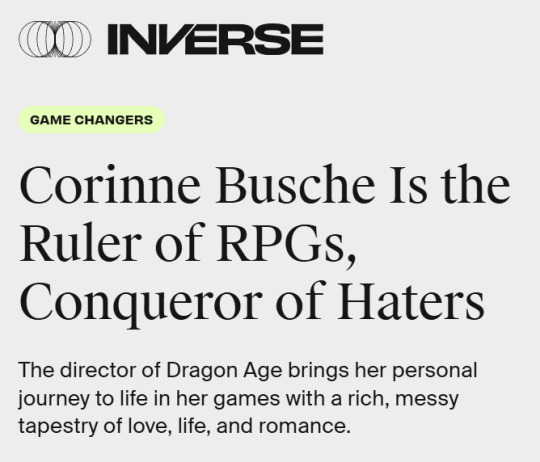
The director of Dragon Age brings her personal journey to life in her games with a rich, messy tapestry of love, life, and romance.
[source]
"If there’s a single Dragon Age character that ever made their way to Super Smash Bros, it should be the lovable dwarf Varric Tethras – at least that’s what Dragon Age: The Veilguard director Corinne Busche thinks. “Can you imagine, in a game like Smash Bros, seeing him whip around the battlefield,” Busche tells Inverse, “You could smash someone back off the ledge by giving Bianca a good old toss, and don’t worry, it’ll ricochet, he’ll catch it. It writes itself.” Varric, always with his beloved crossbow Bianca, has been something of a poster dwarf for the franchise — a constant in a series that drastically changes between each entry. But Varric himself is also a perfect representation of Dragon Age at large. An emotionally complex character, Varric openly deals with deep trauma, but can still manage to be whimsical and uplifting. That holistic sense of character is a big part of what’s made Dragon Age so successful, and lasting. Its influence is clear to see, especially in the 2023 Game of the Year, Baldur’s Gate 3 – which heavily borrows from the world and party member design of Dragon Age games. It’s a connection that’s been pointed out by countless fans and critics — but what’s fascinating is how Baldur’s Gate 3 and Veilguard feel like they’re advancing different aspects of Dragon Age’s identity. “It’s not lost on me, and it’s not lost on the team, how important these games are in people’s lives,” Busche says, “Coming into this game, that’s a tremendous feeling of accountability and of needing to be true and authentic to what these games mean to people.” When it comes to authenticity in games, plenty of directors and developers talk the talk, but Busche is the rare game maker who delivers. From her time with The Sims to Dragon Age, Busche has always brought a deep sense of humanity to the game, putting characters first and never shying away from nuance or complexity in identity, relationships, and existential crises. It’s what makes Busche a leader in the industry, and why BioWare tried so hard to carry on the Dragon Age series’ legacy with Veilguard. But Busche isn’t finished yet. She’s come a long way in the industry and has wisdom to impart — and more projects to come."
"Varric himself is also a perfect representation of Dragon Age at large. An emotionally complex character, Varric openly deals with deep trauma, but can still manage to be whimsical and uplifting"
"The Days Before Fantasy Like many developers, Busche got her start from humble beginnings, working on a series that’s a far cry from a fantasy epic — Tiger Woods PGA Tour. In fact, Busche hadn’t planned on working video games at all, but using her digital animation degree she landed work on Tiger Woods as an environmental artist, and the desire to keep making games stuck like glue. But her love of RPGs started long before that, with some deep-cut classics like Heroes of Might and Magic 3 and Final Fantasy XII – which she argues is the best one in the series. An even bigger influence on her personal philosophy as a developer, however, was the Square Enix cult classic Xenogears. “That was the first RPG that really touched my heart, that made me cry, where I feel in love with the characters, and realize these games have something to say,” says Busche “They touch on deep socially relevant narratives through these fantasy setting and the complexity of characters.”"
"Xenogears was an incredibly influential game to developers like Busche. Its creator, Tetsuya Takahashi, went on to make the wildly popular Xenoblade franchise."
"Those specific RPGs have a lot to say about identity and personality, and that’s a topic that Busche has constantly wanted to explore in her work – how games can explore autonomy and choice. Busche has been open in the past about transitioning while at BioWare, and how much the studio helped her feel seen and supported. But there’s another vital piece of her career that directly played into Busche’s expertise with Dragon Age, and it might not be what you think. Before leading the charge on Veilguard, Busche honed her skills working on an even bigger mega-hit franchise, The Sims. For over five years she worked in designer and creative director roles. “Working at Maxis and on a game like The Sims, is an incredibly fortunate environment for a designer to really hone their craft, and the reason I say that is they’re deeply complex games,” says Busche, “You’re really exploring underlying systems that drive character behaviors, skill progression, game economies, all allowing for emergent gameplay.”"
"Busche cut her teeth on the Sims 3: Into the Future expansion."
"To Busche, games like The Sims, or even Animal Crossing, continue to flourish because of human nature, the inherent need we have to be social creatures and form connections. They’re deeply relatable games that reflect our real lives, but in a way, that same idea can apply to a complex RPG like Dragon Age — and Busche’s time with The Sims gave her a unique advantage going into Veilguard. “I love that marriage of simulation and these fantasy worlds full of rich, deep characters that feel lived in. I believe that as RPGs continue to evolve, what you’ll see is an increasing focus on that marriage between simulation and a fantasy storytelling layer,” says Busche “After all, it’s about immersion, it’s about autonomy and relatedness. These are deep common aspects between these two seemingly different styles of games.”"
"An Origins Story Dragon Age has been a lot of things over the years, an open world game, a mobile hero-collecting title, dozens of comics and books, and even a Netflix series. Fan-created works have flourished for nearly two decades – the fan fiction archive website Archive of Our Own even has over 13,000 entries for Dragon Age: Origins alone. That idea of player agency and identity is the very bedrock of what Dragon Age is built on. As such, Dragon Age has always been incredibly progressive. Origins liberally featured queer romances, and Inquisition, the third game in the series, has a whole plotline about a major side character being transgender. This allows the series to explore themes of identity and belonging in ways other RPGs can’t, and Veilguard certainly sticks to that idea. “I’m an openly queer, trans woman,” Busche says. “It shaped everything about who I am, and it’s been the source of a lot of joy, a lot of difficulty, and perspective. For me personally, one of the greatest gifts about being trans is the amount of introspection it forces upon you. You spend a lot of time deeply examining who you are, and why that matters.”"
"Zevran from Dragon Age: Origins was an accomplished assassin, but, more notably in 2009, a bisexual character."
"For Busche, great games offer a mirror that allows you to reflect on your own identity, preferences, and choices. When developing a game, Busche says she is “thinking about the role introspection plays on people in general, and how each of us go through our lives having these moments of crises, epiphanies, and those quiet moments when you’re alone. These are questions that are ripe for personalized experiences like RPGs, especially when you consider our biggest creative pillar: Be who you want to be.” To Busche and the team it “felt like the right time” to really take Dragon Age’s exploration of identity further, especially with a character like Rook that’s so molded by the player’s personal feelings and thoughts. But one of the more interesting strides Veilguard makes is allowing you to share experiences, including romances, with a compelling cast of party members — easily some of the most memorable characters BioWare has ever created."
"The Fight For Progress And Fate For Dragon Age Questions about BioWare’s future abound, especially with the team now pivoting to focus work on Mass Effect 5 — a similarly long-awaited comeback for a beloved franchise. But in the immediate future the studio has faced a different problem, a hate campaign that’s put Veilguard at the center of a kind of culture war on social media, along with plenty of hateful comments toward developers and review bombing on sites like Metacritic. “I think we should talk about it,” Busche says. “It’s hard. I grew up in a time when it really felt like we’re there to celebrate the games and to have these shared experiences, and that drive is still there. I think the discourse we see is the result of highly polarized times, and perhaps it’s a little naive. I know it’s hard when you have to ask the question, is this game for me? Do I belong here? And games are better for it when we can say yes, you do belong here.” Dragon Age is far from the only game that’s come under fire recently, particularly for inclusions of diversity, or diverse storytelling. For most of this year, Assassin’s Creed Shadows has been the constant target of a hate campaign, with Ubisoft’s art director recently condemning the backlash and harassment the studio and team has faced. The creator of the indie game Tales of Kenzera: ZAU, Abubakar Salim, has also been vocal about the “fever pitch” of racism the game and its team have received. These kinds of events seem to be happening more and more, but for BioWare and Busche, the focus is on celebrating what the team has created. “I know, and something that’s very important to me, is that games are inherently diverse when you think about the size of these teams and the specializations you have within them. When you have diverse, complex, large groups of people coming together to make something, of course, the game is going to be a reflection of those teams,” says Busche “I think we need to consider that we can make the most authentic, best experiences when we’re tying into what makes us as the developers, and you as the fans, when we can tie into those elements that make us distinctly human, and that means differences.” In Busche’s mind, not embracing the lived experiences of the development team would result in stories and worlds that feel less relatable, less alive. Game developers also need to feel safe in what they do, which ultimately means being able to see themselves reflected in their work. “We have an incredibly diverse player base, and what I mean by that is their motivations and expectations,” Busche says. “This becomes the biggest opportunity to continue that tradition of reinvention.” At the end of the day, gamers Busche believes gamers have so much in common, starting with a love for the game. “What I long for is just that opportunity for us as gamers to step back and get in touch with why we fell in love with games in the first place, and recognize how difficult and complicated and messy it is to make games,” says Busche, “To share these vulnerable experience and just approach it with a little greater sense of kindness and curiosity.”"
[source]
#dragon age: the veilguard#dragon age: dreadwolf#dragon age 4#the dread wolf rises#da4#dragon age#bioware#video games#long post#longpost#lgbtq#mass effect#mass effect 5
125 notes
·
View notes
Note
Leon and/or Walter for the ask game if possible! :)
LEON
How I feel about this character - ohhhhh. Oh buddy. What have you done. Ohhh you need therapy so bad. I am so sorry. Design fucks, he'd be so confused by modern day - I like him very much. Also not blaming him in full for what came after I mean. Bro couldn't know it'd stretch on for around 1000 years. Also had many crises about the whip and it holding Sara's soul.
People I ship with this guy - Sara <333 oh Sara my dear <3 my sweet <3. Also Joachim. (Worsties to lovers [still worsties])
Non Romantic OTP - honestly. Not many people come to mind. I do think he and Sara were also bffs. Gandalfi and Leon would keep in touch after.
Unpopular Opinion... - I'm not sure I have any about Leon? I mean he's a funny little fella weighed by tragedy.
One thing I wish had happened - he should've gotten to kill Dracula aka Mathias at some point. I recognize the story and the grief and lack of closure as a theme with Death being inescapable too but also like. Let him kill Mathias. As a treat. (So many feelings here. Broooo. You already see so much bitterness, disbelief in the conversation where Mathias offers immortality.
WALTER
I love his style. Hate him. Smug son of a bitch (derogatory).
I do not ship him.
He's worsties with Death. Death would kill him the first shot it has at the fool.
His death should've been more painful.
I don't wish for anything more in canon. He got what he deserved. Except perhaps seeing what his games were like? Idk man.
11 notes
·
View notes
Text
More on Redemption Arcs
So, there’s something else I want to say about Enemies to Lovers / Enemies to Friends / in general redemption arcs, and in particular those where a character who’s previously been hurt by a villain or their associates is now in a caretaking role for that villain.
Obligatory no one is obligated to forgive someone who’s caused them trauma, or go through the emotional labor of supporting them, or ever interact with them again. But, IMO, it works better if you approach it from the perspective of: “Okay, so why would the traumatized character want to interact with the source of that trauma?” Think about something positive they’re getting from this relationship, from the character’s perspective, and/or think about it in terms of what would establish a bond between them that would cause character A to not want to say: “Okay I don’t care if they’re reformed / reformable, they’re someone else’s problem.”
And obviously there’s better and worse, or at least healthier and less healthy reasons for this. One good one is to have circumstances / the plot force them to grit their teeth and work together, causing bonding through alliance (I dunno the actual term), and at some point during or after this they go “Oh shit we’re actually friends now” (CoughZukoCough). Another of my favorites is to have characters bonding through a shared trauma. This could be a “we’re all in the same boat” situation like I mentioned above but instead of succeeding together they suffer together, or it could be through similar circumstances but not actually the same event, or it could be they’re both abused and traumatized by the same Even Worse Villain and the subordinate villain ends up standing up to their abuser and helping the hero. (E.g. @wildfaewhump’s Iesin and Talvos storyline here on Tumblr, go check it out).
Here’s a couple of case studies of this with redemption arcs I’ve written avoided writing like 90% of the actual recovery phase of, which I’m putting below a Keep Reading both because we’re several paragraphs in now and because one of them spoils the canon material, and also yeah I’m being obnoxious writing long-winded essays about my own fics even if it is my blog. Fics are linked to Ao3, check the tags and summaries on there for trigger warnings and read at your own risk.
Case One: Resurrection x And x Reconciliation
This is in the Hunter X Hunter fandom, and it’s a Gon & Neferpitou friendship, which if you’re familiar with the canon material sounds like the worst fucking idea ever for an enemies to friends arc. Long story short Pitou killed (and also reanimated as a corpse puppet) someone close to Gon, and the trauma of this utterly broke him, to the point of being so obsessed with revenge that he pushed away and hurt his closest friend, took an innocent person hostage for leverage, and basically snapped and went to utterly insane lengths to kill Pitou that it would have caused him a slow, horribly painful death if it weren’t for circumstances.
Okay, but long story short, the person whose death set this all off later turned out to have somehow reincarnated himself into another body, and Gon already processes stuff in really weird ways, so he was now left struggling to process the delayed realization of all the fuckups and reckless and harmful things he’d done, and the trauma of the actual “fight” against Pitou, and meanwhile Pitou got the fun experience of experiencing grief and loss and a near-death (technically actual death) experience for the first time and starting to process that she’d caused that kind of trauma for hundreds of thousands of fully sentient people. And also it turned out that they both sacrificed their lives to kill each other and accomplished absolutely nothing in the process, because the person Gon was trying to avenge turned out to be still alive, and the person Pitou was trying to protected turned out to already be fatally injured.
So this is kind of the exception that proves the rule because Gon and Pitou’s friendship is absolutely 100% born of shared trauma, it’s just that a major part of said trauma was mutually inflicted on each other, and supporting each other kind of helps them heal. This isn’t necessarily actually psychologically healthy or a good idea, but it’s pretty well established in canon that the only thing worse than every single adult in the setting’s track record at supporting people during mental health crises is their track record at stopping Gon from doing whatever the fuck he decides to do, and no one wants to deal with Pitou either.
Case Two: La Resistance / Fresh Ink
This is in, uhh, the Warner Bros Cartoon Universe fandom / Who Framed Roger Rabbit fandom, but by nature the canon material doesn’t have much of a plot for the former and the later is really just the setting. Lemme try and summarize this: in the final battle against the terrorist group that was creating Toons (living cartoon characters with reality warping powers) as living weapons in an attempted genocide against other Toons, the only two surviving toons on the villain’s side, Wendy Weasel and Riley Raccoon, were semi-adopted by some of the protagonists: Yakko, Wakko, and Dot Warner, and Slappy Squirrel. At first mostly Wendy because in the immediate aftermath of the battle Riley was in the ICU.
Okay, why did they spend their time dealing with her? This one’s different because Wendy herself didn’t really cause that much in the way of direct trauma to the characters who ended up supporting her - the ones she really hurt didn’t have much to do with her - however she’s just a fucking chore to try to get along with because she’s passive-aggressive, aggressive-aggressive, destructive-aggressive, and her main defense mechanism is to intensify these traits even further so she was just a hostile brat most of the time.
Well, this starts as a “Forced together by external circumstances” plot, of a sort: Wendy ended up as a prisoner after the battle - she defected, but never actually surrendered because she knocked herself unconscious while killing the main villain. The FBI did not want to have to deal with a prisoner who could teleport through walls, pull weapons and tools out of thin air, Jedi Mind Trick guards, etc. etc. etc, and the Warner Siblings just happened to be in a possession of a tailor-made prison designed to hold creatures like her (originally meant to contain them, they broke out but refused to move out) and were among the like 5-10 people on the planet who could actually fight her, so the Feds basically went: “Your problem now,” or just as accurately, the Warners and Slappy were not letting what was obviously an indoctrinated child soldier who defected and helped them get deemed “Too dangerous to let live since we can’t keep her contained long enough to have a trial” as a matter of principle.
But reason B, especially as they interacted with Wendy, is that the Warners and to a lesser extent Slappy knew what it was like to be drawn into existence and surrounded by people who hated them, feared them, or at least didn’t respect them. Again there was an attempt to seal the Warners permanently in an inescapable prison, and this was before a method of actually killing Toons was invented so they’re pretty sure the humans would have preferred to straight-up murder them for being too powerful and out of control... which was also the exact same ideology held by Wendy’s creators. And they also really empathized with the strong ��sibling” bond she had with Riley (not actually supposed to be siblings but drawn by the same animator so sort of siblings and they just kinda decided they were) because it reminded them of themselves as well. This is self-explanatory with the Warners, with Slappy, in the fic she and Screwy Squirrel were siblings, and “Gee wouldn’t it be terrifying if a character as chaotic and sadistic as Screwy Squirrel was a villain was literally the starting point for Wendy’s character concept.
Also reason C is “Obnoxious child using passive-aggressiveness to mask trauma, anger, and need for love and attention” fit right in in the WB Studio Water Tower.
Anyway tl;dr that’s another example of a potential motive behind the caretakers in a redemption arc: if the characters sort of identify with the villain due to similar backgrounds to the point where they sort of go: “That could’ve been me in different circumstances.”
#whump meta#fandom discourse#talking about my own writing#redemption arcs#Wendy Weasel (OC)#animaniacs (Fandom)#Hunter X Hunter (fandom)
5 notes
·
View notes
Text
17 Ways To Predict The Future That You Can Do For FREE (#8 Will Have You Shook - And I Should Know, I Totally Saw It Via Augury)
It was 8.57pm on a Wednesday night. I was sitting on my bed, waiting for the microwave to let me know my lasagne is ready, and that’s when I first heard it.
Silence.
Day 2 of UK lockdown was nearly over, but the tidal wave of boredom - and the consequential existential crises - was set to hit the nation at any moment if it hadn’t already.
Amazon orders of ‘watercolour kits for beginners’ had surged, YouTube workouts I’m pretty sure were filmed in some murderer’s basement were clogging up YouTube's trending page, and returning to the dark side of Duolingo was filling the days of my fellow countrymen.
Whether it’s not being able to work, losing your job, or being sick with the virus yourself, people across the globe are on the hunt for new skills, hobbies, and how-to’s on filling the 24 hours.

The thing is, your next hobby (the one you will inevitably ditch once you realise you have the artistic ability of a dented tin of tuna) will probably require items you can’t scavenge in the home you’re currently self-isolating in.
And God forbid the skill you decide to take up includes making self-expressive sculptures about your childhood with toilet paper.
Why not take up a skill that doesn’t require paint pots you will inevitably spill on the carpet and lie to your landlord about? Why not occupy your time with the occult, instead?
Of course - you should become a fortune-teller!
With 44 methods of predicting the future available and most of them requiring, well, nothing - or, at the very least, a handful of beans and maybe the odd animal sacrifice - trying and testing methods of seeing need not use up your time, nor the scraps left in your cupboards.

And once you’ve fulfilled your destiny as a prophet, why not let us know when this pandemic will be over?
But before you’ve even learnt to read palms, and before you’ve even considered how Mercury’s retrograde will affect the heaviness of your next period, you should probably find out what the methods are, and which ones you can do with half a tin of bins and the protein powder from last year when Love Island shamed you into thinking you weren’t good enough.
(Bro, you totally are.)
That’s why I’ve decided to guide you in the next step your spiritual journey. Or at least keep you busy for the next 79 minutes. And given the current state of the world, the latter is far more precious.
But before I launch into the 17 different ways you can trace out your future in self-isolation, I thought we should actually know what fortune tellers are.
A Brief And Totally Ironic History Of Predicting The Future
*pushes glasses up nose*

Fortune telling is defined as the principle of predicting the future events of someone’s life. There are many different types of the practice and the people that predict the future, from those that practice divination (which involves rituals to see into the future), to fortune telling (which takes place in a less formal setting and is far more symbol based).
The latter found its feet in the Renaissance era, and was firmly planted in Romani culture, explaining why gypsy fortune tellers are the most prevalent image representing the art. In fact, it was ol’ Nostradamus that made his name in this period.
Michel de Nostrodame was a typical 16th century Frenchman.
Only he spent his time working in apothecaries, predicting the future, and writing down what he claimed would happen. In total, he made 6338 prophecies and 11 annual calendars, and it’s one of these prophecies which has become rather relevant to 2020.
That is, it predicts the end of the world. And it’s kind of coming true.

Nevertheless, the once forbidden art of predicting the future has been founded in our cultures since ancient times.
Astrology was the OG, setting the trend that would spark the uncountable practices currently in practice. Those that could predict the future - whether from their own abilities as prophets, or using systems as clairvoyants - had a strong political stance as prominent advisors.
Obviously, the role has lost respect over the years.
However, the practice faced their greatest amount of opposition during the Enlightenment era as reason began to prevail, ditching superstition. Once it had become, like, so uncool, it became cool again in the 19th century alongside the rise of Spiritualism - AKA dead people can talk to us, k - which tied the capabilities of mediums with those that could see the future.
This was the root of popular culture’s current approach to today’s soothsayers, a relationship sealed with the New Age culture of the 1960s.
Getting your palm read, or having a flick through some tarot cards became a tradable commodity during this decade. And an odd 30 years later, the term ‘psychic’ officially hit the scene.

Psychics were people that utilised ESP (Extra Sensory Perception) to identify extra sensory information we normal mortals can’t quite detect. Often, this involves telepathy or clairvoyance to assist in their predictive skills.
So - are you ready to join the ranks?
*Throws sticks onto floor to find answer*
Here Are The 17 Ways You Can Predict The Future Even If You’re In Lockdow
Aeromancy
Divination that uses the weather to predict the future
Go outside. Look up. Look for symbols in the sky.
Boom - you’ve just practiced one of the oldest forms of divination to man.
In less stuttered terms, aeromancy is the practice of seeing symbols in the weather that point you to what’s happening in your life right now, and what will happen in the future. Most of these practices rely on this symbolism, and thus have a few explanations for certain types of weather-based events.
Not only is this one of the simplest - and least costly - ways to predict when the lockdown will end, it also makes you a bad bitch. And that’s because it was one of the forbidden arts in the Renaissance period.
Once you’ve discovered your inner rebel when getting your daily quota of vitamin D, you might wish to specialise in one of the sub-types of this art: you can investigate storms, peruse wind patterns, stare at the stars or keep it simple with clouds.
Astrology
Divination by the movements of celestial bodies.
Okay - this one’s gonna take some reading.
Finding out your horoscope these days is as easy as mispelling ‘Gemini’ in google and hoping you don’t end up on a website dodgier than that kebab you consumed 3 days ago.
(Just hasn’t quite settled in my stomach, yet.)

Astrology is a pseudoscience - that is, it mixes sciences and the supernatural - which studies how the position of the celestial bodies impact events here on Earth. It might be mocked within an inch of its life, but it's figured prominently throughout history.
Going back to 2BC, this has designed the basis of our calendars and our seasons. Historically, cultures have assigned vital importance to astronomical events of note. And now you can too!
Astrology these days focuses merely on horoscopes as astrologers believed those born around the same time of the year when the planets were aligned in a similar way had a lot in common and thus had certain personalities. From there, individual predictions created in the forms of charts were brought to the table.
Finding your chart might be a simple feat thanks to the internet, but interpreting it? Whole ‘nother ball game.
And that’s what you’re going to do for the next 3 hours!
Numerology
Divination via numbers
As with all methods of divination, numerology has a variety of sub-types held to its name - but the basic definition is the practice of assigning spiritual value to numbers. This typically focuses on numerical patterns.
One of the more basic methods of seeing the future, numerology is actually more anchored in our culture than you’d expect. Pythagoras - yeah, that guy that forced you to spend two sevenths of your teenage years obsessed with triangles - even followed its basic principle, claiming numbers were a universal language offered by god(s) as a “confirmation of truth”.
Triangles, man.
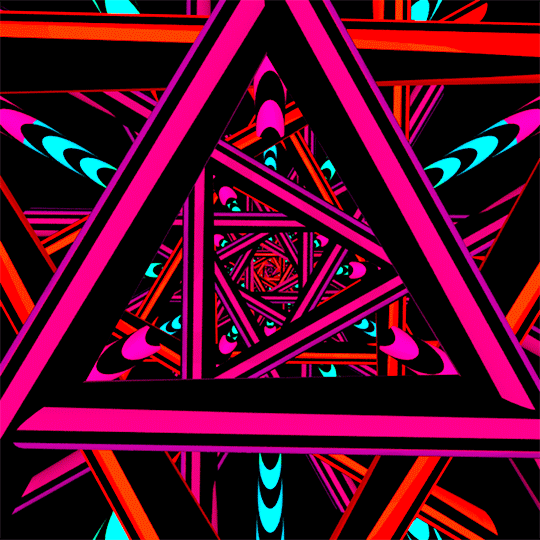
This started with the Ancient Egyptians, who believed life was made up of cycles of numbers, and that harnessing those cycles was how you could discover your key to success. Their fundamental claim was that each individual number has a personality, for example, the number 7 is the thinker or the searcher of truth.
By deducing key facts of your life with numerology, such as your date of birth, and what you should do on the different days of the months, navigating your future via numbers is your next hobby.
Augury
Divination via the pattern of bird flight
As I write this post, I am following the UK government’s guidance to only go outside once a day. You’d think that this would restrict access to this form of fortune-telling, but if you can get to a window, you’re ready to forecast major world events.
Birds have always featured prominently in cultures, with many belief systems claiming the animals are messengers from the gods and can even transcend the borders of heaven. This means if you want to try your hand at augury, you will have to consult ancient texts which outline the patterns you need to be looking for.
And there’s a lot of patterns to look for.
You could be investigating how fast they fly, you could be interpreting the movement of their flight, and you could even be considering the way birds eat if you chuck a handful of grain on the floor.
Evidently, this form of divination is best practiced at Brighton when you’ve got a bag of chips in one hand, and an unknown meat-like substance in the other.
Automatic Writing
Divination via writing
This one might be the easiest to do - but it's the most difficult to do right.
Pen? Check. Paper? Check. Access to the inner thoughts of spirits surrounding you? You’ll need all three to correctly practice this form of clairvoyance.
Many believe that otherworldly beings essentially write through you in this process. So, clear your mind, take a deep breath, and let your hand be guided.
Bibliomancy
Divination using books
Another simple form of fortune telling, this requires you opening a book to a random page, reading the paragraph you feel drawn to, and interpreting the message the gods are clearing letting you in on.
Bibles are the most popular book used for this practice, but any ol’ book will do.
Ceromancy and Capnomancy
Divination using candles
If, like me, you have a minor addiction to candles, this is the perfect pastime to enjoy the pleasant experience of burning a candle and predicting your future.

The former requires you asking the, uh, candle a question, pouring melted wax from a candle into the water and interpreting the shapes of the cooled wax to find your answer.
The latter involves the interpretation of the smoke of the candle. As this is measured in the same way as interpreting the clouds, you can follow the same principles of aeromancy here, too.
Palmistry
Divination via hands
One of the most famous forms of telling the future, palmistry follows several simple principles and practices. You can read hand shape, you can investigate line reading… And the options don’t stop there.
From more general observations of your own, to more specific divination, all it requires is a hand, and a guide to reading that hand.
Scrying
Divination using mirrors or crystal balls
It’s the official mascot of telling the future - but you don’t need a crystal ball to master this art. In fact, using a mirror to open a portal to another realm and contacting the spirits is far more common.
It’s also far more dangerous due to the potential for negative spirits to cross the barrier into our realm. In fact, that’s how Bloody Mary really made her name.
You can read more about her story here.
Favomancy
Divination using beans or peas
Are you a selfish prat? Were you one of those people that panic bought everything in my local Waitrose, and left shit all for that old guy who just staggered past me?
A - fuck you. And B - this is your new hobby!
All you really need to tell the future is a can of beans, and an open mind. With its origins in the Middle East, by dropping a handful of beans or peas and interpreting how they fell, you can see how the next few weeks might just pan out.
It might follow a complex set of rules, and it might follow very precise principles, but nevertheless, it can help point out the favourable and unfavourable signs for your future.
Haruspicy
Divination via liver dissection
This is by far one of the simplest methods of fortune telling - trust me.
First, you sacrifice an animal to a deity of your choice. Second, you reach into its corpse, and rip out its liver with your bare hands.
Then, you sever the liver into several parts based on deities of your choice. From there, you’d investigate it for signs from the gods based on size, shape, colour, and texture.
Signs interpreted, messages understood, future predicted.
*drops mic into small intestine*
Iching
Divination via yarrow stalks and Chinese coins
This might be the most complicated method of divination on this list, and this might cost the most as you try to get yarrow sticks by next day delivery, but thanks to websites offering to carry out the process for you virtually, finding your future might actually be the most effortless.
Harness the power of ancient Chinese divination via the I Ching (AKA The Book Of Changes) and the principle of cleromancy, the production of random numbers to determine messages from the divine.
This ancient Chinese manual is based on 8 symbolic trigrams and 64 hexagrams which are interpreted in terms of yin and yang...
Okay. I’ll be honest.
I don’t really know what’s going on.
There’s some vegetables, there’s some loose change involved, there’s more yin and yang references than the first day of Coachella… All I know is you find a website that does all that for you, and you ask it a question.

Moleosophy
Divination using the moles on your body
Live in an urban area? More chance of seeing a fox hump a Chicken Cottage box than the Big Dipper?
Then why not try your hand at reading the moles on your skin?
This system of divination assigns significance to your moles, allowing you to interpret the marks on your body as warning you of your future. And warning is the right word.
Got a mole on your throat? You’ve more chance of being beheaded than Damien’s family members in The Omen. Freckle on your nether-regions? You’re a god-forsaken whore.
There’s many more meanings left to be unlocked - and hopefully not all of them are negative attributes about yourself or your death.
Oneiromancy
Divination of dreams
Ever wondered what that dream you had, you know, the one with Gabriella from High School Musical saying all the old people should just die from Covid-19, cause, like, it’s inevitable, actually meant?
Well now you can!
With more online guides and overpriced books offering to analyse and interpret your dreams for you, accessing your subconscious and predicting future events has never been easier. But you will need to remember what actually happened in your dreams.
Fuck.
Cartomancy
Divination using cards
Couldn’t get Prime delivery on your tarot cards? Have a knack for solitaire?
Pull out your pack of playing cards, and use ‘em to guide your future. There are many rules you need to follow, but it’s a good way to practice your divination skills before you move onto other oracle based cards.
It even follows the similar principle of tarot, with each card having a different meaning, e.g. the 8 and Hearts represents an unexpected gift or a visit.
And if you give up, just play a game of Clock Patience!
Scapulimancy
Divination via bones
Still got the carcass of that animal you slaughtered in the name of your chosen god/goddess?
Good.
Reach into the body, and pull out the shoulder blade bones - aka the scapulae. Examine for messages and markings from your chosen god/goddess, and jot down the future events you predict on your calendar.
Then, check out your council website to see which day they take out the sacrificial goat bin.
Tasseomancy
Divination using tea leaves
It’s the pop culture representative for the occult, making its name in the Harry Potter films and leaving us all with the vile experience of coughing up tea leaves into your morning.
It might be one of the most accessible forms of fortune telling - especially as it is primarily based on symbolism and your own interpretation of the messages your favoured god has left in the dregs of your hot drink - but tea leaves must be used for this practice.
Tea from tea bags won’t have the same effect.
Which One Are You Trying Out Tonight?
Leave me a comment and let me know. Or will I know already?

Fancy seeing a weekly article on horror films/the occult/ghost stories/all of the above? Also want to hear a new real ghost story everyday? Follow this blog and join the fam.
Read this post next.
#fortune telling#crystal ball#crystals#psychic#paranormal#occult#medium#predicting the future#how to predict the future#tarot cards#bloody mary#haunted mirror#portals#clairvoyant#uri geller#ed and lorraine warren#lorraine warren#oranum#trusted tarot#psychic near me#horoscopes#zodiac signs#daily horoscope#birth chart#astrology#astrology signs#tell the future#read the future#tell me my future#long post
4 notes
·
View notes
Text
Salmon Run and Presentation
A (not so) brief dissertation on narrative framing in video games, featuring Splatoon 2
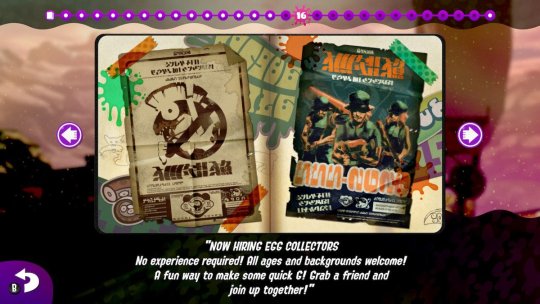
With the holidays in full swing, I took advantage of a deal one day when I went into town, and finally got my hands on Splatoon 2. Having loved the prior game as much as I did, waiting this long to get the sequel felt almost wrong. But like many another fellow meandering corpus of conscious flesh, I am made neither of time nor money.
Finally diving in, I figured I might take this excuse to remember that I write game reviews, sometimes. You know, when the tide is high, the moon blue, and the writer slightly less depressed. I ended up scrapping my first couple drafts, however. You see, a funny thing was happening; I kept veering back into talking about Salmon Run, the new optional game mode the sequel introduces.
Also I might look at the Octo Expansion later, on its own. After I get around to it…
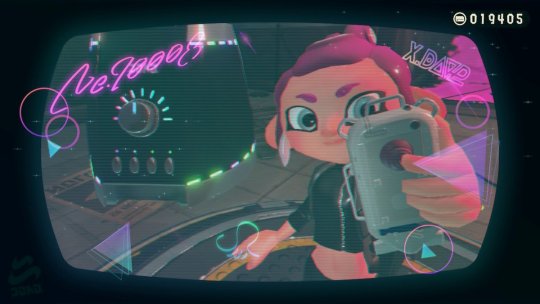
Look, the base game already has a lot of content to explore, and as previously stated, I am sadly corporeal, and not strung together with the metaphysical concept of time itself.
My overall thoughts, however, proved brief, so I’ll try to keep this short.
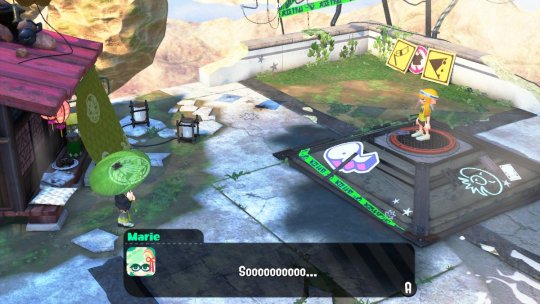
(Mild spoilers coming along.)
Gameplay wise, I think the story mode is much improved upon by handing you different weapons for certain levels which were specifically built with them in mind. Whereas the prior game left you stuck with a variant of the starter splattershot all the way through. This keeps things interesting, pushes me outside of my comfort zone, and it’s a good way to make sure players will come from a well-informed place when deciding what weapon they want for multiplayer; which, let’s face it, is the real meat of these games and where most players are going to log the most time.
I also love the way bosses are introduced with the heavy drums and rhythmic chants and the dramatic light show. It endows the moment with a fantastic sense of gravitas, and manages to hype me up every time. Then the boss will have an aspect of their design which feels a bit silly or some how rather off, keeping the overall tone heavily grounded in the toony aesthetics the series already established for itself.
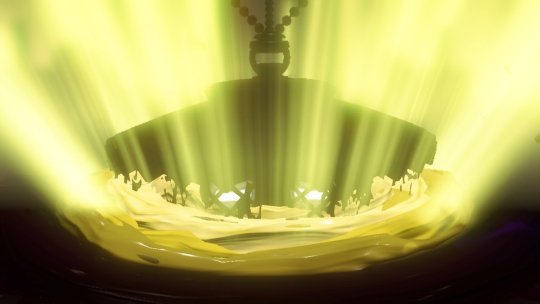
Narratively, I felt rather okay about the story aspect of Story Mode. The collectible pages in the levels still have a certain amount of world building, though this time it seems more skewed toward explaining what pop culture looks like in this world, such as, an allusion to this world’s equivalent to Instagram.
Cynical as it is…
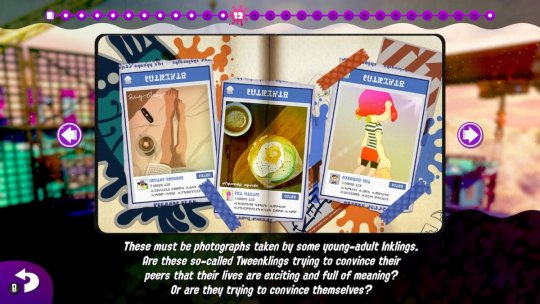
That’s definitely still interesting in its own right, though perhaps it’s less of a revelatory gut-punch as slowly piecing it together that the game takes place in the post-apocalypse of Earth itself, and the inklings copied ancient human culture.
We still got some backstory for this game’s idol duo, though. And that, I appreciate. It means Pearl and Marina still feel like a part of this world, rather than seeming obligatory for the sake of familiarity, given the first game had an idol duo as well.
Meanwhile, perhaps it is a bit obvious that Marie’s cousin, Callie, has gone rogue, and that she is the mysterious entity cracking into the radio transmissions between her and Agent 4. If I recall correctly, that was a working theory that came about with the first trailer or two. That, or she had died.
As soon as Marie says aloud she wonders where Callie has gone, I knew right away. And that’s just in the introduction.
That said, on some level, after stomaching through certain other games and such that actively lie or withhold information to force an arbitrary plot twist for plot twist sake, it feels almost nice to go back to a narrative that actually bothers to foreshadow these things. Plus, having gotten already invested in Callie as a character from the first game, I still felt motivated to see the story through to find out why she went rogue. And, loving the Squid Sisters already, there was a hope in me that she could be redeemed, or at least understood. In terms of building off the prior game’s story, Splatoon 2 is moderately decent.
Also, I mean, c’mon. The big narrative drive might be a tad predictable, but hey, this game is for kids. It’s fine.
That, I think, is something I love the most about Splatoon. Despite feeling like you’re playing in a Saturday morning cartoon, and being aimed primarily at children, it doesn’t shy away from fairly heavy subjects. Such as the aforementioned fact that the humans are all long dead and you’re basically playing paintball in the ruins of their consumerist culture.
Which brings me to what fascinates me so much about Splatoon 2: the way in which Salmon Run is framed.
You see, on the surface, Salmon Run appears to be your typical horde mode; a cooperative team (typically comprised of randoms) fights off gaggles of foes as they take turns approaching their base in waves. Pretty standard for online shooters these days, as was modernly popularized by Gears of War 2, and Halo ODST.
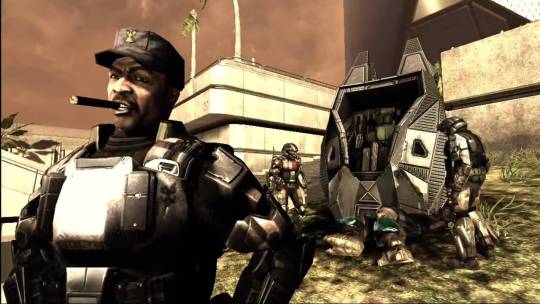
I say “modernly,” as the notion of fighting enemies as they approach in waves is not exactly a new concept for mechanical goals within video games. Rather, the term itself, as applied to multiplayer shooters, “horde mode,” became a point of game discussion when Gears of War 2 introduced the new game mode by that same name back in… 2008?
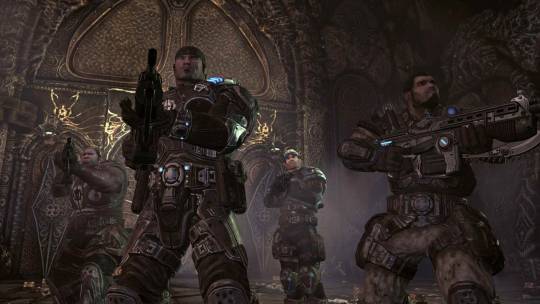
No, no that can’t be right. I played Gears 2 back in high school (I had worse taste back then, okay?). Which, from my perspective, was basically yesterday. That game being ten years old would mean I myself am old now, and that just can’t be. I’m hip. I’m young.
I am, to stay on theme here, fresh.
But okay, existential crises and game talk terms aside, the writing team behind Splatoon 2 probably decided to absolutely flex when it came to the narrative surrounding Salmon Run. It is one of the most gleaming examples of the nontraditional things you can do with writing in video games, to really elevate the experience.
Let me explain.
You see, narrative in video games typically falls into one of two categories: either the story sits comfortably inside of the game, utilizing it like a vehicle to arrive at the destination that is its audience’s waiting eyes and ears. Or the narrative, on some level, exists rather nebulously, primarily to provide something resembling context for why the pixels look the way they do, and why the goals are what they are.
Not to say this is a binary state of existence for game writing; narrative will of course always provide context for characters, should there be any. It’s primarily older, or retro games that give you a pamphlet or brief intro with little in the way of worrying over character motivation, and the deeper philosophical implications of the plot, etc (though not for lack of trying). These would be your classic Mario Bros. and what have you, where the actual game part of the video game is nearly all there is to explore in the overall experience.
Then you have games like Hotline Miami that purposely sets up shop right in the middle to make a meta commentary about the state of game narrative, using the ideological endpoint of violent 80’s era action and revenge-fantasy genre film as inspiration and the starting point to draw comparison between the two. It’s bizarre, and I could drone on about this topic.
But I digress.
Despite falling into that latter category, that is to say having mainly just an introduction to the narrative context so you can get on with playing the game, Salmon Run is a stellar example of how you can make every bit of that context count (even if it does require the added context of the rest of the game, sort of, which I’ll explain, trust me).
First, a (very) brief explanation of how the game itself works, for the maybe three of you who haven’t played it yet.
A team of up to four inklings (and/or octolings) have a small island out in open waters. Salmonid enemies storm the beaches from various angles in waves. Each wave also comes with (at least) one of eight unique boss variants, who all drop three golden eggs upon defeat. Players are tasked with gathering a number of said golden eggs each round, for three rounds, after which their failure or success in doing so shows slow or fast progress towards in-game rewards.
And it’s all an allegory for the poor treatment of labor/workers, utilizing the fishing industry as both an example and a thematically appropriate analogue. Yes, I’m serious.
First, Salmon Run is not available through the main doors like the other multiplayer modes. Rather, it is off to the side, down a dingy looking alley. And when you’re shown its location, either because you finally entered the Inkopolis plaza for the first time, or because the mode has entered rotation again, Marina very expressly describes it as a job.
A job you should only do if you are absolutely, desperately hard strapped for cash. You know, the sort of job you turn to if, for one reason or another, you can’t find a better one.
An aside: technically, playing Salmon Run does not automatically net you in-game currency, with which to buy things, as regular multiplayer modes do. Rather, your “pay” is a gauge you fill by playing, which comes with reward drops at certain thresholds; some randomized gacha style capsules, and one specific piece of gear which gets advertised, to incentivize playing.
The capsules themselves drop actual paychecks in the form of aforementioned currency, or meal tickets to get temporary buffs that help you progress in the multiplayer faster via one way or another. Which, hey, you know, that helps you earn more money also. Working to get “paid,” so you can get things you want, though, still works perfectly for the metaphor it creates.
When I first saw it open up for rotation, I found out you had to be at least a level four to participate. Pretty par for the course, considering it’s the same deal with the gear shops. But, again, it’s all in the presentation; Mr. Grizz does not simply say something akin to the usual “you must be this tall to ride.” He says he cannot hire inexperienced inklings such as yourself, because it’s a legal liability.
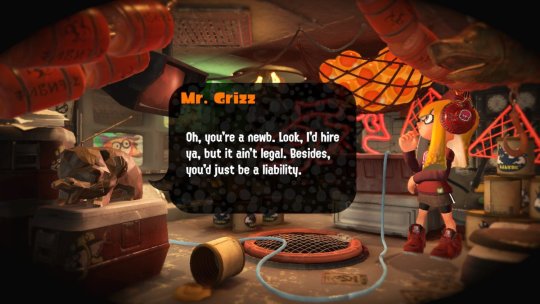
After returning with three extra levels, I was handed off to basic, on-the-job training. Which is only offered after Mr. Grizz (not ever physically present, mind you, but communicating with you via radio), the head of Grizzco, uses fairly typical hard sell rhetoric when it comes to dangerous, or otherwise undesirable work: calls you kid, talks about shaping the future and making the world a better place, refers to new hires as “fresh young talent,” says you’ll be “a part of something bigger than yourself.” You know, the usual balancing act of flattery, with just the right amount of belittlement.
Whoa, hang on, sorry; just had a bad case of deja vu from when the recruiter that worked with the ROTC back in high school tried to get me to enlist… several times… Guess he saw the hippie glasses and long hair and figured I'd be a gratifying challenge.
The fisher imagery really kicks in when you play. Which, I figure a dev team working out of Japan might have a pretty decent frame of reference for that. A boat whisks you out to sea with your team, and everyone’s given a matching uniform involving a bright orange jumper, and rubber boots and gloves. If you've ever seen the viral video of the fisherman up to his waist in water telling you not to give up, you have a rough idea. Oh, and don't forget your official Grizzco trademark hats.
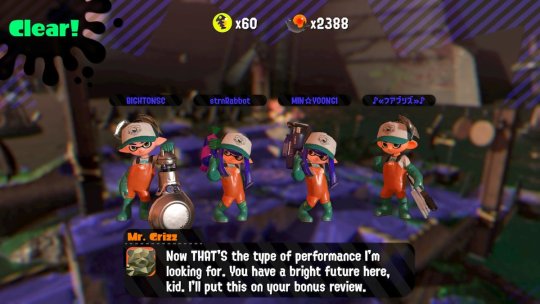
It’s on the job itself where a lot of what I'm talking about comes up the most; that is to say, despite buttering you up initially, Mr. Grizz shows his true colors pretty quickly. While playing, he seems to only be concerned with egg collecting, even when his employees are actively hurting. This is established and compounded by his dialogue prior to the intermediate training level, in which informs you about the various boss fish.
Before you can do anything remotely risky, even boss salmonid training, Mr. Grizz tells you he has to go over this 338 page workplace health and safety manual with you. But, oops, the new hire boat sounds the horn as you flip to page 1, so he sends you off unprepared. “Let’s just say you’ve read it,” he tells you, insisting that learning by doing is best.
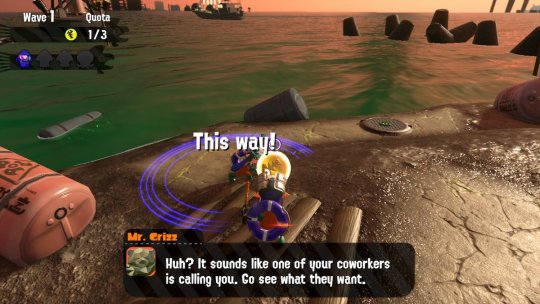
This flagrant disregard employee safety, in the name of met quotas; the fact we never see Mr. Grizz face to face, making him this vague presence that presides over you, evaluating your stressed performance with condescension; that we are not simply given the rewards as we pass thresholds to earn them, having to instead speak with another, unknown npc for our pay… It all drives toward the point so well.
The icing on the cake for me is when a match ends. You, the player, are not asked if you’d like to go back into matchmaking for another fun round of playtime. Rather, you are asked if you would like to “work another shift.”
The pieces all fit so well together. I shouldn’t be surprised that, once a theme is chosen, Splatoon can stick to it like my hand to rubber cement that one time. It has already proven it can do that much for sure. But it’s just so… funny? It’s bitterly, cynically hilarious.
Bless the individual(s) who sat in front of their keyboard, staring at the early script drafts, and asked aloud if they were really about to turn Mr. Grizz into a projection of all the worst aspects of the awful bosses they’ve had to deal with in life. The answer to that question being “yes” has led to some of my favorite writing in a video game.
All of these thoughts, as they started forming in my skull, really began to bubble when I noticed Salmon Run shifts become available during my first Splatfest.
Splatfest is, to try and put it in realistic terms, basically a huge, celebratory sporting event. Participation nets you a free commemorative t-shirt and access to a pumping concert featuring some of the hottest artists currently gracing the Inkopolis charts.
The idea, the notion, that a hip young inkling (or octoling) might miss out on one of the biggest parties of the year because they need money more than they need fun? It’s downright depressing.
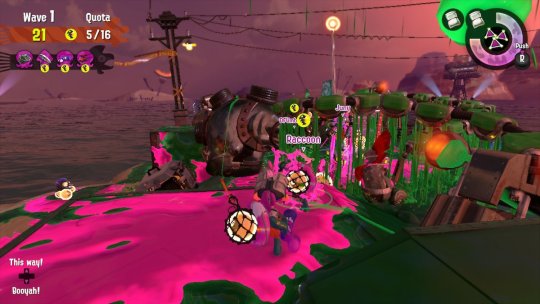
It got me thinking. I looked at my fellow egg collectors. In-universe, we were a bunch of teen-to-young-adult aged denizens missing out on all the fun because we desperately needed the cash. We became stressed together, overworked together, yelled at by our boss together. But in those sweetest victories, where we’d far surpassed our quota? We celebrated together.

Spam-crouching, and mashing the taunt, something changed. I felt a greater sense of comradery with these squids and octos than I did in nearly any other coop game. And it’s all thanks to the rhetorical framing of the game mode.
It accomplishes so many things. It’s world building which wholistically immerses you in the setting. But mainly, its dedication to highly specific word choice does exactly what I mentioned earlier: it elevates the experience to one I could really sit down and think about, rather than use to while away the hours, then move on to something else. So many games make horde modes that feel inconsequential like that; it’s just for fun.
There’s nothing wrong with fun being the only mission statement for a game, or an optional mode of play. But this is exactly what I mean when I say this is the nontraditional writing games can do so much more with. And Splatoon 2 saw that opportunity, and took it. And what a fantastic example of bittersweet, cold reality, in this, a bright, colorful game meant mainly for children…
Happy Holidays, everyone!
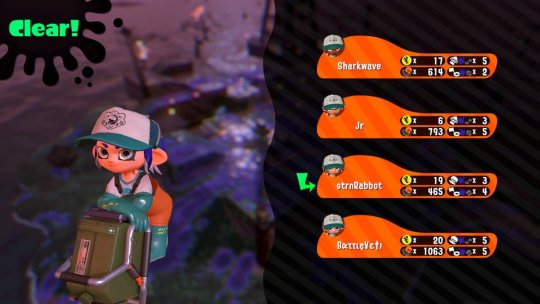
21 notes
·
View notes
Photo
(inhale) time to rant why I love all this.
First off, super Mario Galaxy was one of the first Mario games I ever got to play ( next to Mario kart Wii and super Mario Bros Wii,my gaming life started with the Wii) so it holds a very special and precious place in my heart. Second. We didn't really see anything too star designed at least with the characters during the festival,(Then again Bowser attacked so quickly it was hard to tell) so everyone including YOSHI wearing star themed get up is just stellar. didn't mean to pun
Third. That food looks like something that would come out of a Mario game (and looks tasty ngl)
Forth. Rosalina. FRICKIN ROSALINA. IM HAVING A CRISES. I FEEL LIKE MARKIPLIER OVER LADY D! I love EVERYTHING about her design. She looks so majestic, mystical and beautiful. And I love how emotional she looks. like. BRO. This sketch reminded me of how much I felt for her during her story book I read 10 FLIPPING YEARS AGO WHEN I FIRST PLAYED IT. She looks so broken in a way that makes me want to hug her forever. She was already one of my top favorite princesses and you did such an amazing job on her.
Final. You. You not only made all this amazing stuff with just in sketch form, You did it wow you were suffering from a cold and mental exhaustion ,You are an absolute soldier. I hope you get better have a merry Christmas.
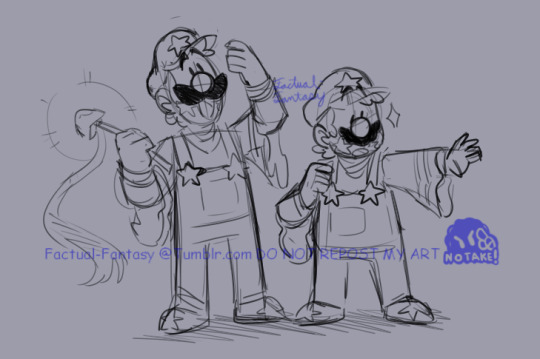

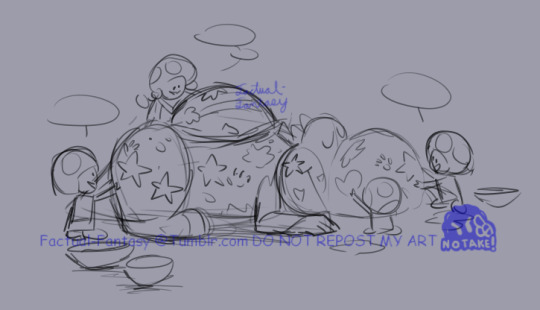


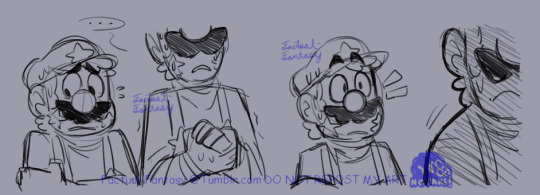
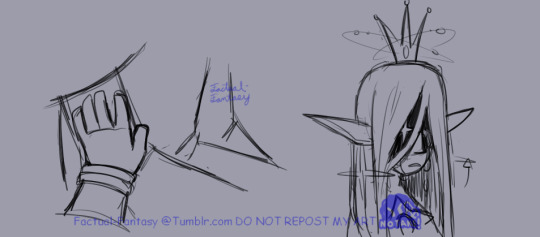




So a lot of people have been asking me what my plans are for Rosalina.
She is a part of my AU, and unlike most characters.. I have her whole story alllll figured out. Everything from her origin story, her design, the Blue star Festival, heck, even the food at the festival has been dug into. And I wanted to draw a series of comics about her story but.. thinking about how much effort that was going to take was really daunting…
I haven’t really had the mental or physical energy to do anything lately. Let alone draw. I mean, I have a nasty cold so maybe that’s why-
Anyway, I didn’t have the energy to make her comic. And I’m not sure if I ever will.. but I wanted to share something about Rosalina. So here I have some sketches of the different outfits the characters were going to wear, and my redesign for Rosalina.
There��s so much we put into her story and all the little details, but right now I just don’t really have the energy to share it all.. So I guess here’s to hoping I get my energy back sometime and can make more polished content for her wooooo…
#super mario bros#mario and luigi#rosalina#princess peach#toadsworth#yoshi#that was long#stay safe over where you are#please get better
4K notes
·
View notes
Text
Thor: Ragnarok, a joyous, trashy, retro-nostalgic comedy, is the best of the Marvel films
by Ari Mattes

Thor: Ragnarok - the latest addition to the Marvel Cinematic Universe – is the best of the Marvel films. The third in the Thor series, directed by New Zealand wunderkind Taika Waititi, its narrative follows the battle between Thor (Chris Hemsworth), the brawny god of thunder, and his sister Hela (Cate Blanchett), goddess of death.
Hela makes a push to claim the throne of the kingdom of Asgard; she wants to use this power to conquer the rest of the universe, which, she believes, rightfully belongs to the Asgardians. Thor, assisted by a diverse group of allies, including his shifty brother and occasional enemy Loki (Tom Hiddleston), undergoes various trials and tribulations, before coming up against his evil sister in a final epic battle, waged over the fate of the cosmos.
Though the story does connect with and extend elements from the earlier Thor films, Thor: Ragnarok feels like a different beast entirely, and I can understand why diehard Marvel fans (I’m not one) might be disappointed.

From left, Mark Ruffalo, Chris Hemsworth, Tessa Thompson and Tom Hiddleston. Marvel Entertainment, Marvel Studios, Walt Disney Pictures
Whereas the earlier Thor films featured numerous pompous, posturing monologues about heroism, virtue, and fate, the spirit of Waititi’s film is diametrically opposite to this. It offers a joyous kaleidoscope of colour and swirling psychedelic imagery, underscored by a crisp, retro-synth soundtrack. The flamboyantly designed action sequences, including one where the Hulk battles a giant wolf, are frequently punctuated by moments of genuinely hilarious dialogue.
Hemsworth is in his element as the hunky God, appropriately shirtless for at least one scene, albeit a short one. He plays the part with a disarming humour, as though sending up his public persona as Hollywood heartthrob, mimbo of the moment. Jeff Goldblum’s performance as Grandmaster, the blue-eye-liner wearing DJ and megalomaniacal ruler of the planet Sakaar (basically an intergalactic waste dump), is comically delirious. Mark Ruffalo is equally a pleasure to watch as Bruce Banner (aka the Incredible Hulk), even if his stint in the film in human form feels short.

Jeff Goldblum as Grandmaster: comically delicious. Marvel Entertainment, Marvel Studios, Walt Disney Pictures
I will be eternally suspicious of Cate Blanchett playing a super-villain after her painfully hammy turn as Irina Spalko in Indiana Jones and the Kingdom of the Crystal Skull (2008), but she is surprisingly restrained, here, as the malevolent Goddess, keeping the character grounded with her superb physical presence.

Cate Blanchett as Hela is surprisingly restrained. Marvel Entertainment, Marvel Studios, Walt Disney Pictures
None of the actors offer poor performances – an incredible feat in itself, given how much of the film would have been shot in front of green screen. Tessa Thompson is appealing as a Valkyrie warrior, Hiddleston is fine reprising his role as Loki, and Anthony Hopkins as Odin, playing the sage, greybeard type he seems destined to repeat for the rest of his career, thankfully, only appears in a couple of scenes. Perhaps Idris Elba is wasted. As Heimdall, a warrior-guide on Asgard, Elba has a thankless, inconspicuous part for an actor of his stature and magnetism.

Idris Elba as Heimdall has a thankless part. Marvel Entertainment, Marvel Studios, Walt Disney Pictures
In contrast to Blade Runner 2049, the other mega blockbuster recently released, the cast and crew here look like they’re having fun. This is, after all, one of the primary motivations for these ritual stagings we call cinema – and it lends an infectious vitality to material that could otherwise seem tawdry and trite, demanding that viewers, too, participate in the party.
The brilliance of the film, indeed, resides in its audiovisual qualities. Its look is magnificent, especially the segment on Sakaar, and the brilliant synth score by Mark Mothersbaugh is alternately spritely and hypnotic, a perfect homage to the scores of the electro-infused, smoky-neon-lit VHS fare upon which the film’s makers clearly grew up.

The look of the film is magnificent. Marvel Entertainment, Marvel Studios, Walt Disney Pictures
Astonishingly, Thor: Ragnarok does not shy away from a thoughtful, though conventional, depiction of what are probably the two biggest political crises of our time. In the depiction of the planet Sakaar, the film cleverly situates problems of waste management within the broader ecological discourse of global warming – isn’t it the ultimate dream of the big polluters to have another planet on which to dump Earth’s waste?
And it has a few things to say on the ways in which forced migration and asylum seekers act upon, test and strengthen the tenacity of identity, culture and kinship.
The whole thing is perhaps a little opportunistic in its trashy, post-Stranger Things retro-nostalgia trip. And perhaps this is more evidence of the cynicism of Hollywood producers, willing to modify their output to fit whatever is “trending”. But it is just so well done that I challenge any viewer who came of age as a cinema-goer in the 1980s not to embrace it. This is like the live-action Masters of the Universe film that never got made (including teleportation design that recalls the saturated prismatic colours of MOTU).
In addition, this is one of the best comedies I’ve seen recently – it is a comedy in superhero guise – but its humour is far from the sentimental, saccharine gags of other films from Marvel, like Spider-Man: Homecoming (2017) or The Avengers (2012).
The well-conceived situational humour of Eric Pearson’s sharply written screenplay is brought to life by brilliant comedic performances from the actors, including Waititi himself, who plays Korg, a Kiwi-bro made of rock. His first line to Thor is: “I’m made of rock – you don’t need to be afraid, unless you’re made of scissors.”

Taika Waititi as a Kiwi bro made of rock. Marvel Entertainment, Marvel Studios, Walt Disney Pictures

Thor: Ragnarok is one of the best films I’ve seen this year – which is something I never thought I’d say about a Marvel film. We can put this down, I suspect, largely to the direction of Waititi, a master of low-key humour, who shot to fame with his second feature film, Boy (2010) and followed it up with New Zealand hits What We Do in the Shadows (2014) and Hunt for the Wilderpeople (2016). If this one is anything to go by, Waititi will be making Hollywood films for a long time to come.
Ari Mattes is a Lecturer in Media Studies at the University of Notre Dame Australia.
This article was originally published on The Conversation.
8 notes
·
View notes
Note
It seems like you really like Kyle Rayner. If you could create a team of superheroes for him to lead (max. 7 members including him), who would be on the team. Also, which of Kyle's superhero aliases would he use?
Oh- Kyle is the reason I collect comics… probably the reason I MAKE comics XD I’ve been a fan of his since the early 2000s :D I got into his title because of a JLA comic written by Mark Waid- Queen of Fables. It had a storyline where the JLA characters all had their secret identities split from their super hero selves. Kyle went crazy drawing on all the walls cause he didn’t have enough of a creative outlet and I identified super heavily with that. I tore a muscle while drunk on my drawing hand and spent 10 months in a splint. I went crazy not being able to draw. Cause of that book though, I got into Kyle and REALLY loved his storylines
A super hero team? I don’t know if Kyle would lead it because Kyle isn’t really a leader type to me. Kyle works best as a team player- he’s best with a partner, romantic or friend. He’s not a leader type to me, but he is still an alpha personality type to me. In New Guardians he… sort of guided the team. I couldn’t see it working out cause that’s not really how Kyle’s character works. You want me to slam him into a team though? I’ll do it >:D
Nightwing- Dick Grayson. YES OMFG PLEASE I am so angry that DC never did anything with Dick x Kyle besides a short intro during Hal’s funeral, and Kyle as a spirit in Obsidian age. TWO CONVERSATIONS. Kyle interacts with Batman the most, but he was always a parent figure for Kyle. I want a team up. For that, I want Nightwing (And cause he’s my second fav DC character- yes I’m bias).
Flash- Wally West. Their friendship is the reason I collected JLA titles. Wally and Kyle together are super fun with their shenanigans. I would buy anything with these two teaming up. Take my money now DC.
Donna Troy- Cause she’s straight up amazing. And I want her in the black stary body suit. That suit was perfect.
Arsenal- Roy Harper. I love Connor Hawke to pieces, but my favourite to read GLs are Roy and Ollie. Ollie bros up better with Hal (although I do like him teaming up with Kyle), but I think I like the idea of Roy better cause they closer in age group. Drinking buddies maybe? I also like Roy’s range too.
Zantanna- I’m not sure if Kyle ever teamed up with her during the Crises in infinite weekly titles DC did before the first Rebirth storlyline, where they reinstated the GLC and resurrected Hal, but I love Zantanna, and I think Kyle would work well with magic cause of his imagination.
Tempest- Garath. I’ve only read a few storylines with him, but I really liked Garath’s character. His version of the Aquaman powers was really interesting and I’d like to know more about him :)
The version of Kyle I’d use would have to be an Earth Green lantern one. Probably the dog collar one. It gets some shit, but I think it was really different, and Jim Lee did a great job designing it. White lantern / Ion Kyle is too powerful for a team up. I liked this version of Kyle cause he was max sass and personality, and was in the middle of a heap of ally and feminist storylines. Nowdays, Kyle is very watered down. I guess that happens though when you’re not the main character of the storyline :(
Now, if the question was a partnership, I’d totally pair Kyle up with Guy or Hal. Hands down. Guy for the buddy cop aesthetic, or Hal cause Kyle has a lot of fun playing Space cowboy just as Hal does, and Hal’s character can get super serious without someone to bounce off. The brother relationship they have is really a great read- going from super close to being bratty at each other XD I’d absolutely buy any coming with these two team ups :)
I hope that wasn’t too wordy ^^ Who I like Kyle to team up with is something I think about a lot, but I don’t ever think of him as the ring leader. All characters have their strengths in their character, and Kyle’s strength is in his mind to me. Like… I don’t see Hal as a leader type either. John? HELL YES. Hal? Hal is fearless- that’s his thing. To be gun ho and tackle issues head on. That’s not a leader type. Hal and responsibility don’t mix XD. He can be a team player though, which Guy isn’t good at. They all have their strengths and weaknesses :)
Now I’m actually rambling so I’ll stop XD
#mayasco#Basically I'm a big fan of Obsidian Age#And Titans#and that short run of Outsiders#And I want Kyle on Earth#That's not goign to happen but I can dream#right? ;)
10 notes
·
View notes